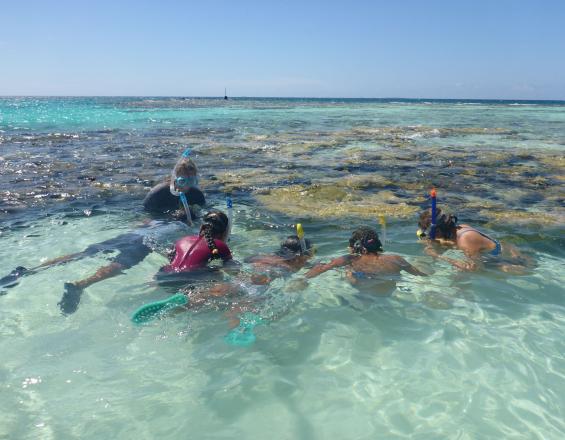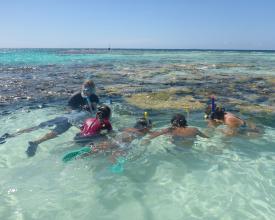
Developing the network of marine educational areas

The project to create Marine Education Areas (MEAs) is a response to the challenge of degrading the marine environment by raising awareness among young people in schools. The network of AMEs helps to make them aware of and responsible for their local environment, so that they can better commit to defending it.
The project financed by the European BEST 2.0 program aimed to extend the AME network of Marquesan origin to French Polynesia.
The activities planned in the project coincided with this desire to create AMEs, such as carrying out an initial ecological survey, giving talks in classrooms, supplying teaching materials and communicating about the actions carried out.
The project involved pupils from 5 schools in French Polynesia in the management of an AME. They were thus involved in actions linked to the study of the marine environment.
The pupils' skills were developed through a variety of educational, scientific and management activities.
Impacts
This pedagogical tool has made it possible to transfer skills from class to class, but also to protect biodiversity by raising pupils' awareness.
The students were able to benefit from several visits by marine biology experts, with preparation by the teachers before the visits and work afterwards. Students managing an AME were thus able to acquire scientific knowledge in a more practical and concrete way than students not managing one.
Although an MEA does not have the characteristics of a marine protected area (MPA), its presence can have a direct impact on the conservation of biodiversity and ecosystems. For example, one school noted a decrease in the amount of garbage collected on the beach of their MEA from one year to the next.
Labeled schools manage their own AME and organize all activities relating to an innovative project. The aim is to "do school differently" by integrating environmental education and sustainable development with a concrete support.
Stakeholders in the project were encouraged to exchange ideas throughout its implementation. This collaboration fosters future partnerships for new projects, with a view to exchanges between players and organizations from different backgrounds (associative/institutional).

